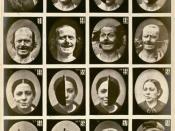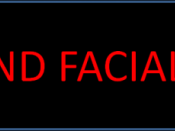Art Essay - Kathe Kollwitz
Kathe Kollwitz was born in 1867 and died in 1945. She was a powerful, intense artist who produced works of great tenderness. Her two artworks 'Woman with dead child' and 'Unemployment' revel the suffering of humanity and social working class.
Kathe Kollwitz was greatly influenced by the hardships of humanity, her main subjects being body language, distortion, death and human vulnerability, as well as fleeting joys. She also focused on social problems with city life, such as prostitution and unemployment and the suffering of the German working class. She was facinated by working class women and depicted them as persons of character, strength and responsibility. The suffering of humanity is well depicted in Kollwitz' artwork, 'Woman with dead child' because the mother's face is hidden, showing deep sorrow. The two are entangled in eachother, almost as if they are one being.
Kollwitz' work has a combined depth of emotion revealing intamicy and drama of individual human relationships with direct social comment.
It is neither sentimental nor abstract. She depicts women as more than just objects of beauty. Kollwitz uses body language and expressive linework. A good example of this is in 'Unemployment'. She uses facial expressions and emotional links between the figures. There is heavy linework and shadow used on the father that sets him apart from his family, as if he can't face the responsibilites. Kollwitz has the action close to the viewer to create intimacy and reveals sensitive handling of light and form through skillful handling of printmaking medium. She varies thickness of lines for expressive purposes and has a subtle handling of the soft ground etching technique. Kollwitz uses pure printmaking such as lithography, woodcuts and etching, and has a mixed technique because of her dramatic interplay of light...



Well done!
glad to find an essay on kollwitz. would of been more legendary, if u mentioned the woodcut 'The Parents"[1923] but thats just luck, not any fault of urs. dont 4get the influence of losing her son in ww1 on her art too and the banning of her work by hitler. duno if those aspects fit the q u wer askd tho
4 out of 4 people found this comment useful.